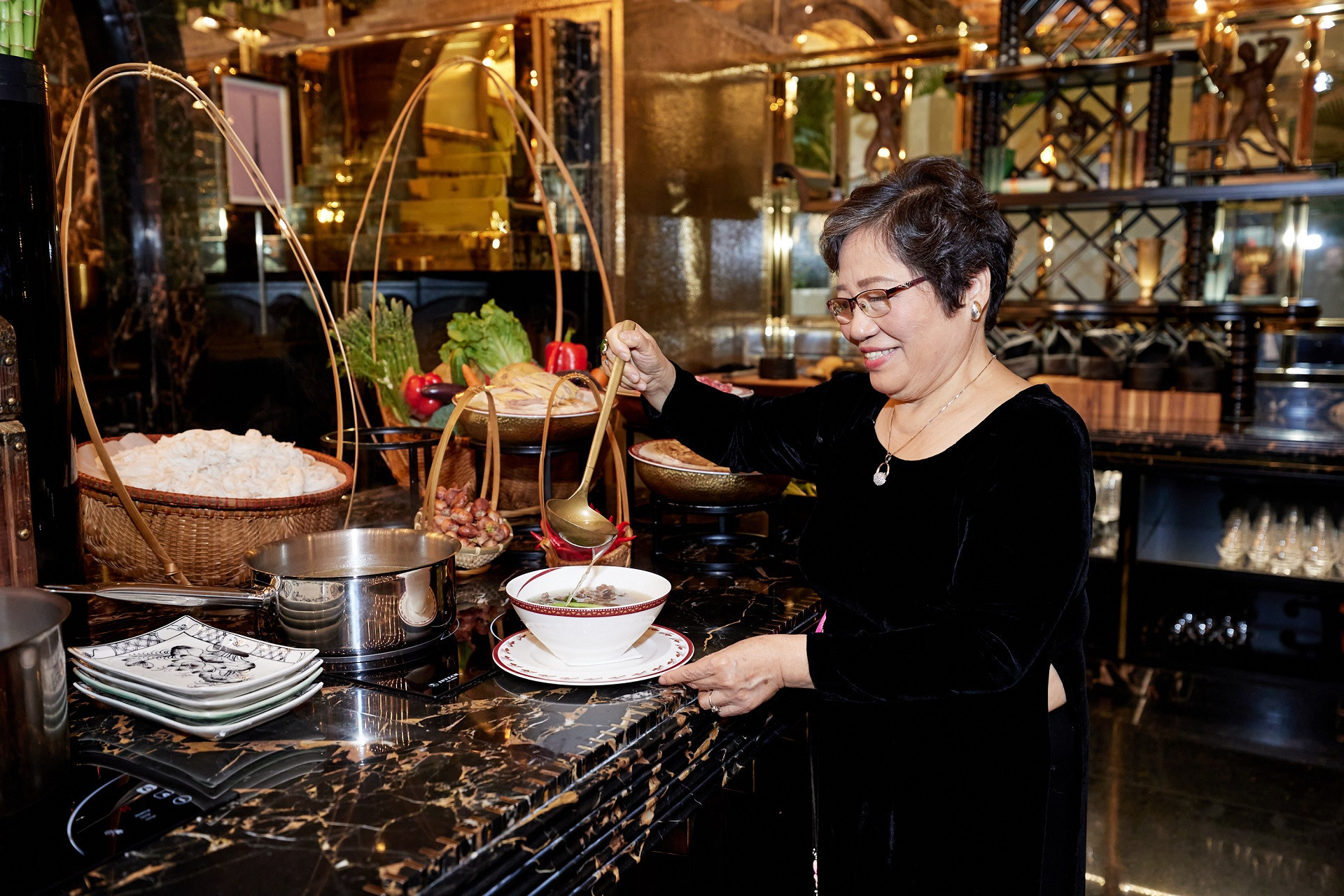
Nam Dinh pho broth, which contains fish sauce, lots of ginger, cinnamon and anise, has an oily film and a strong flavor. The broth is simmered from marrow bones for 15-18 hours.
Fresh beef is sliced and minced until it gets soft and then noodles are placed in a bowl. Cooks then pour boiling water on the beef and noodles.
The typical characteristic of Hanoi pho is a pure broth with cinnamon, star anise, cardamom, and ginger added depending on the restaurant's recipes. Some cooks use peanut worms to make the broth more attractive.
Hanoi Pho uses thinly sliced meat and the noodles are small, thin and soft but still chewy and do not fall apart when served in the hot broth.
While Nam Dinh pho is served with onion and sawleaf (Eryngium foetidum), Hanoi pho has mint leaves.
Controversy
Many articles comparing Nam Dinh pho and Hanoi pho posted on social media have generated numerous comments.
Some people say that Nam Dinh pho has a strong flavor of fish sauce. Also, as the beef is not scalded in boiling water, it is not cooked thoroughly.
“I ate Nam Dinh pho both in Nam Dinh and Hanoi and I always felt the strong flavor of fish sauce. The broth is fatty, which makes diners lose appetite,” Thu Hang commented.
Another netizen agreed that Hanoi pho, which is not too fatty, is more suitable for breakfast.
By contrast, other people argue that it is the strong flavor and the good broth created by simmered bones which makes Nam Dinh pho more delicious.
Other netizens said they would not waste time arguing about which pho is more delicious. They believe the two kinds of pho have special qualities, are wonderful dishes of Vietnam, and need to be prepared very carefully.
Though they have different characteristics, they are based on common principles: the broth is created by simmering beef bones for many hours and is enriched with fish sauce and spices. Also, fennel is an important ingredient in the dishes.
‘With different processing methods, cooks can create differences between the two kinds of pho, thus helping diversify Vietnamese food. And this is really great,” netizen N. Hue wrote.
Anh Tuyet, a national artisan called the "chef for heads of states" and "the living book about Hanoi food", said there is no need to argue about which is more delicious.
She said Hanoi pho is different from Nam Dinh pho and HCM City pho, but all pho dishes are delicious and are prepared in a way to fit the tastes of locals.
The taste of Hanoi pho offered by city shops also differs. The common characteristic is that the broth determines the quality of the dishes. The broth taste is natural, created by simmering bones, with no seasoning powder.
Hanoi pho is best if it is served with fennel grown in Lang area, as the herb there has a taste which cannot be found in herbs grown in other areas.
“I don’t have in-depth research about Nam Dinh pho, but I believe that Nam Dinh pho bears the typical characteristic of the land, fits the locals’ taste, and Nam Dinh pho is the pride of Nam Dinh people,” Tuyet said.
According to Nam Dinh People’s Committee, there are about 500 pho shops in Nam Dinh, and nearly 1,500 Nam Dinh households sell Nam Dinh pho in other cities.
In Hanoi, there are about 700 pho shops, mostly located in the districts of Ba Dinh, Hoan Kiem, Cau Giay, Dong Da, Ha iBa Trung, Thanh Xuan and Long Bien.
Linh Trang